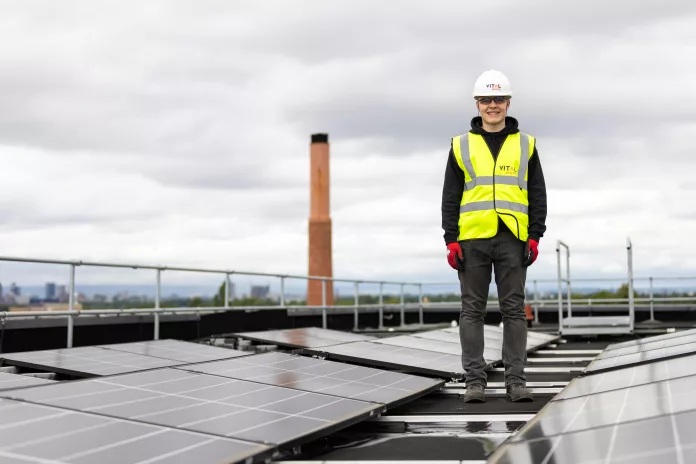Laura Yoder’s journey to self-sufficiency is one of determination and growth. As a single mother with a background in hospitality, Laura’s life transformed in 2003. Her decision to join the Laborers’ International Union of North America (LIUNA) Local 405 in Rochester, Minnesota was a pivotal moment, offering her the training required to ascend from an apprentice to a journeyman laborer. Her newfound skills have since been applied to her work on significant wind energy projects, enhancing her ability to provide for her son with unparalleled health and retirement benefits that her union job furnishes.
The Value Unions Bring to Clean Energy
Unions play a crucial role in the clean energy sector, offering benefits that span the entire lifecycle of a project. From navigating policy complexities to supplying a workforce that’s ready and skilled, their contributions are noteworthy. The 2023 U.S. Energy and Employment Report spotlights a stark contrast – while nonunionized firms struggle to recruit workers, unionized companies face this challenge to a much lesser degree. As Kevin Pranis, marketing manager for LIUNA’s Minnesota-North Dakota chapter, notes, unions give businesses a head start with a pre-existing, qualified labor pool.
Shifting Trends in Minnesota’s Construction Landscape
The year 2018 marked a turning point for Minnesota’s construction sites. Although clean energy was promised to generate local employment opportunities, it was observed that external labor was often utilized for wind projects. LIUNA sought to change this trajectory by partnering with unions, environmental advocates, and policymakers, leading to a concerted push for prioritizing the local workforce within the state’s clean energy endeavors. The Minnesota Public Utilities Commission (PUC) responded by demanding detailed job creation reporting – a move that highlighted the clear advantages of hiring locally.
Making Local Labor a Standard
Transparency became a crucial factor in project approvals, with the PUC and Minnesota utilities insistence on local union labor for construction. This approach has found strong support from project developers and utilities who have embraced the union labor model, recognizes Kevin Pranis.
Unions Dominating Clean Energy Development
Today, Minnesota is a model of union labor implementation. Clean energy projects across the state are traditionally built by in-state union workers. The positive impact is clear, as the state’s clean energy sector grows at an impressive pace. With the proliferating demand and legislative support from pivotal acts, the state is poised to meet its goal of achieving clean energy by 2040 – a goal that also translates into sustained job creation for union members like Laura Yoder, who has found both opportunity and support within LIUNA.

























